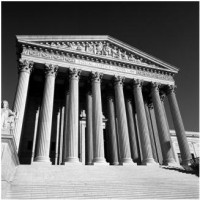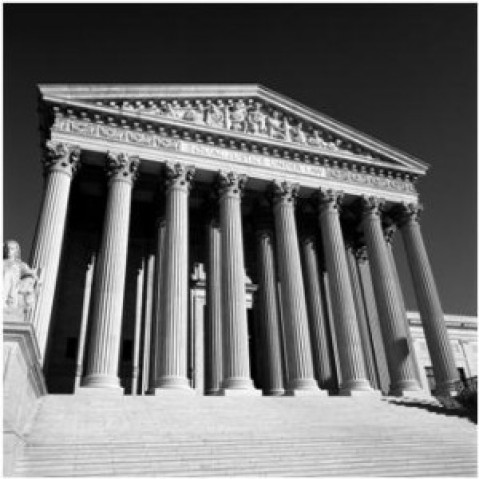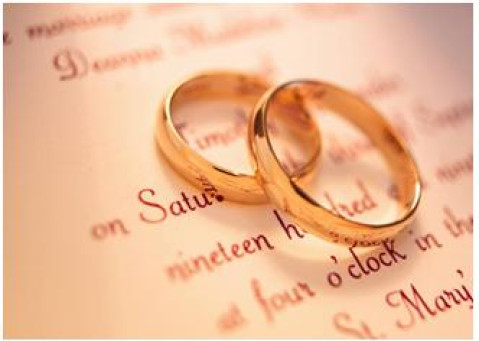Widgetized Section
Go to Admin » Appearance » Widgets » and move Gabfire Widget: Social into that MastheadOverlay zone
Rainbow Rulings: Separate but Equal is Unconstitutional
By Lorenda A. Naylor and Heather Wyatt-Nichol
Introduction
In June 2013, the U.S. Supreme Court (USSC) delivered two landmark decisions for the Lesbian, Gay, Bi-Sexual and Transgender (LGBT) community: United States v. Windsor (570 U.S. 2013) and Hollingsworth, et al., v. Kristin M. Perry (570 U.S. 2013). Known as the “Rainbow Rulings” and the “Twin Victories,” these two cases advance both gay rights and civil rights. The Windsor case struck down Section 3 of the Defense of Marriage Act (DOMA) of 1996 (Pub L. 104-199), which defined marriage at the federal level as between a man and a woman; rendering the definition unconstitutional. As a result, federal benefits must be instated to married gay couples.
This was a major victory for the LGBT community. Prior to the ruling, over 1,000 federal benefits were denied to gay married couples. The Perry case, also known as Proposition 8, restored marriage equality in California. However, the Windsor case did not legalize gay marriage nationally. It merely required the federal government to recognize gay marriage in states that have provided legal sanctions for gay marriage or what is referred to as marriage equality.
These two decisions promote civil rights and serve as a reflection of public opinion. According to numerous polls, the majority of Americans support marriage equality and 70% of Americans born after 1980 support marriage equality. As Americans and public servants, we support these rulings. However, much work needs to be done to ensure the protection of LGBT rights. This article provides a global context on gay rights, reviews U.S. public policy, analyzes the United States v. Windsor case and offers next steps to ensure equal treatment for all Americans.
Global Context
 Gay rights vary widely around the globe. Western democracies and developed countries are more likely to support marriage equality than underdeveloped countries. According to the Pew Research Center’s report, “Gay Marriage Around the World,” 15 countries have legalized gay marriage including South Africa. However, in South Africa gay marriage continues to be highly controversial and stigmatizing. There have been reports of lesbians being attacked and murdered. Two countries offer gay marriage in subunits or specific jurisdictions: Mexico City and the United States. The United Kingdom passed gay marriage in England and Whales, which will go into effect in 2014.
Gay rights vary widely around the globe. Western democracies and developed countries are more likely to support marriage equality than underdeveloped countries. According to the Pew Research Center’s report, “Gay Marriage Around the World,” 15 countries have legalized gay marriage including South Africa. However, in South Africa gay marriage continues to be highly controversial and stigmatizing. There have been reports of lesbians being attacked and murdered. Two countries offer gay marriage in subunits or specific jurisdictions: Mexico City and the United States. The United Kingdom passed gay marriage in England and Whales, which will go into effect in 2014.
Yet, there are countries that prohibit same sex activity and enforce stiff penalties. According to the International Lesbian, Gay, BiSexual, Trans and Intersex Association, five countries have the death penalty for punishment of male-to-male relationships. In addition, over 70 countries use imprisonment to deter same sex activity.
U.S. Public Policy
The U.S. federal government does not provide a national policy on marriage. The right to marry is determined by individual state laws. According to the Human Rights Campaign, 35 states prohibit same sex marriage, 1 state is neutral and 14 states plus the District of Columbia authorize same sex marriage. The right to marry is considered a freedom and a civil right, which is protected under the 5th and14th amendments of the U.S. Constitution. Section 1 of the 14th Amendment states, “No State shall make or enforce any law which shall abridge the privileges or immunities of citizens of the United States; nor shall any State deprive any person of life, liberty, or property, without due process of law; nor deny to any person within its jurisdiction the equal protection of the laws.” This right was confirmed by the USSC in Loving v Virginia (1967), which involved interracial marriage. This case is relevant because marriage was defined as a civil right.
Public policy regarding LGBT rights has been fought by grassroots organizations at local and state levels. Policy at the federal level has a short history and is comprised of two key policies. The first policy is Don’t Ask Don’t Tell (DADT) of 1993 (Public L. 103-160), which prohibited gays from openly serving in the US military. Congress repealed DADT in 2011, which was later signed by President Obama. DADT ended in September 2011.
 The second policy is DOMA, which defined marriage as between a woman and a man. It states that ‘marriage’ means a legal union between one man and one woman as husband and wife, while ‘spouse’ refers to a person of the opposite sex who is a husband or a wife. DOMA fueled political tension across the country and fed into a wider ideological divide. Proponents of DOMA argued on a religious basis that marriage was for procreation purposes and same sex marriage was immoral. Opponents claimed marriage was a civil right with constitutional protections. This legislative policy was echoed across the country and was a reflection of the 35 states that banned same sex marriage. DOMA eventually became the center of the case, United States v. Windsor (570 U.S. 2013).
The second policy is DOMA, which defined marriage as between a woman and a man. It states that ‘marriage’ means a legal union between one man and one woman as husband and wife, while ‘spouse’ refers to a person of the opposite sex who is a husband or a wife. DOMA fueled political tension across the country and fed into a wider ideological divide. Proponents of DOMA argued on a religious basis that marriage was for procreation purposes and same sex marriage was immoral. Opponents claimed marriage was a civil right with constitutional protections. This legislative policy was echoed across the country and was a reflection of the 35 states that banned same sex marriage. DOMA eventually became the center of the case, United States v. Windsor (570 U.S. 2013).
Windsor Case
United States v. Windsor involved Edith Windsor, a New York resident, who legally married her same sex partner Thea Spyer in Canada. When Spyer died, Windsor attempted to claim estate tax exemption for surviving spouses with the Internal Revenue Service (IRS). However, because DOMA defined marriage as between a man and woman, her IRS claim was denied. Windsor was forced to pay approximately $363,000 in estate taxes and she took her case to the Supreme Court.
The court struck down Section 3 of DOMA, ruling that the interpretation of marriage was unconstitutional based on the Due Process Clause of 5th Amendment. In his majority opinion, Justice Anthony Kennedy argued, “Under DOMA, same-sex married couples have their lives burdened, by reason of government decree, in visible and public ways. By its great reach, DOMA touches many aspects of married and family life, from the mundane to the profound. It prevents same-sex married couples from obtaining government healthcare benefits they would otherwise receive.”As a result of the ruling, federal benefits must be instated to legally, married gay couples.

The ruling is a monumental victory for the LGBT community and civil rights advocates due to the scope and economic impact. According to the U.S. Census Bureau, there are approximately 600,000 same sex couple households in America, which means these couples are potentially eligible for federal benefits. In 1997, the U.S. General Accounting Office released a report (GAO/OGC-97-16), which was amended and expanded in 2004, stating that over 1,000 rights, benefits and privileges were denied to gay married couples (but provided to married heterosexual couples). These rights and benefits include veteran’s benefits, social security, housing, federal civilian benefits, employment benefit such as health insurance, and immigration and naturalization.
Because of the court’s decision, this policy can have a major impact on same sex households. The key is successful implementation and ensuring that benefits are instated in a timely, seamless manner. At the federal level, the definition of marriage includes both heterosexual and same sex couples. Therefore, gay married couples are entitled to federal benefits. However, it is important to note that the Windsor ruling did not challenge Section 2 of DOMA, which allows states to refuse to recognize same-sex marriages performed in other states.
Next Steps
Today, the federal government recognizes legally married gay couples. They are entitled to federal rights and benefits, which provide long lasting economic and psychological benefits. However, what impact does the court’s ruling have on the 35 states that ban same sex marriage? Can the traditional definition of marriage be upheld?
Under the Equal Protection Clause, it is questionable to allow these states to use the traditional definition of marriage, which does not comport with the Supreme Court or federal government. It creates a separate but equal policy. If our civil rights history and legal precedents offer any guidance, it is separate but equal cannot prevail. All citizens, regardless of sexual orientation, must be guaranteed “life, liberty, [and] property.” If we want equality to be woven into our social fabric then we need to treat everyone equally and fairly. We are called on to pass federal legislation banning prohibition of same sex marriages and prohibition of job discrimination based on sexual identity and orientation. Opponents may yell federalism, but if we are to reclaim our position in the world as the leader of human rights, then we must act boldly and swiftly.
Lorenda A. Naylor, PhD, MPH, MPA is an associate professor and director, government and public policy program at the University of Baltimore, College of Public Affairs. She can be reached at [email protected]. Heather Wyatt-Nichol, PhD, MPA is an assistant professor and MPA director at the University of Baltimore, College of Public Affairs. She can be reached at [email protected].







Follow Us!